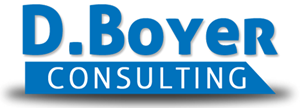Business is mostly conducted via email or phone communications.
Office hours 10:00 a.m. to 6:00 p.m, Mon. - Thurs., and 10:00 a.m. to 2:00 p.m. on Fridays.
SEND EMAIL INQUIRIES DIRECTLY TO:
Dawn.Boyer@me.com
Business is mostly conducted via email or phone communications.
Office hours 10:00 a.m. to 6:00 p.m, Mon. - Thurs., and 10:00 a.m. to 2:00 p.m. on Fridays.
SEND EMAIL INQUIRIES DIRECTLY TO:
Dawn.Boyer@me.com
Business is mostly conducted via email or phone communications.
Office hours 10:00 a.m. to 6:00 p.m, Mon. - Thurs., and 10:00 a.m. to 2:00 p.m. on Fridays.
SEND EMAIL INQUIRIES DIRECTLY TO:
Dawn.Boyer@me.com
Technology and Artificial Intelligence is Changing Workforce Hiring and Operations
February 4th, 2021 by Dawn Boyer
Technology and Artificial Intelligence is Changing Workforce Hiring and Operations
Artificial intelligence (AI), recruiting systems and processes, and methodologies are on the cusp of significant changes to the traditional hiring techniques. Databases and software, including Automatic Tracking Systems (ATS) and personnel management systems (Human Resource Information Systems; HRIS), are using AI as a bridge between job seekers and companies to increase hiring speed as well as reduce overhead and time-to-hire. Creating an agile workforce from ‘digitizing’ future employees is the leading edge of human resources management and hiring practices.
Artificial intelligence and ATS platforms are enabling more pre-qualification questions (saving time by eliminating those truly unqualified), as well as video interviews using automated interviewing, and with the job seeker’s permission – pre-screening (background checks) and reference checking. Pre-qualification enables recruiters to identify better-suited candidates faster – saving company budget, labor, and overhead costs. Pre-screened applicant pools enable recruiters to have a pool of candidates at their fingertips – and when they need them. Recruiters can hire faster because they identify better candidates who may otherwise ‘get away’ due to slow (days or weeks) internal processing and paperwork funnels.
New agile methodology, digital technology, and increased speed of prequalifying and processing job applicants is in response to the needs of modern job seekers. Those seeking new positions are looking to be hired ‘yesterday’ – or at least a hiring decision and onboarding occurring within 24-48 hours (particularly in the temp-staffing industry). Another benefit the modern job seeker targets is same-week or even same-day pay. Artificial intelligence IT systems, coupled with an agile HIRS, enables companies to hire within 24-hours and enable end-of-the-shift payroll … sometimes within 15 minutes of the employee clocking out.
Another advantage of using AI/HIRS platforms is cooperative recruiting with business partners, vendors, and possibly competitors in a process called co-opetition (Chekr; recruiting software platform company). Co-opetition includes liaising with clients, vendors, partner companies, or divisions (competitors for job seekers) to share recruiting processes and pools of applicants to speed up identifying qualified candidates.
Implementing a digital, AI-based, ATS and HRIS platform within an operations environment enables increased responsiveness to employees’ needs for ‘instant’ pay and benefits. An agile work environment can automate relevant communications to increase hiring productivity. Imagine recruiters enabled to send digital notifications to employees via text messaging for new job openings (promotional opportunities or requests for referrals with finder’s fees). Imagine recruiters able to send notifications to past or laid-off employees eligible for rehire (already prequalified; reference and background checks unnecessary) the second a job opening occurs.
Another benefit of the AI/HRIS platforms is automating the process of job performance evaluations. Supervisors will use automated record-keeping systems that generate reports via the HRIS system data, coupled with employee and supervisor input, for days/hours worked on average, project-related productivity, notable achievements, new training or educational accomplishments, commissions earned, sales revenue generated. The supervisor pulls data from payroll systems and clicks on a button that spits out an objective, informative report on the employee’s efficiency over a specified calendar period. This system eliminates the incidences of subjective and potentially illegal wording (that could lead to EEOC or ADA litigation) while providing a factual, documentable employee record of achievements.
Staff working in the human resources and recruiting fields know how labor-intensive recruiting can be. Using information technology, digital processes, and agile methods within HRIS platforms speeds up and increases hiring efficiency. Enabling identification of the higher qualified candidates faster and hiring them quicker results in the employer producing revenue sooner from job productivity of more qualified candidates in the marketplace.
Dawn Boyer, Ph.D., owner of D. Boyer Consulting – provides resume writing, editing, publishing, and print-on-demand consulting. Reach her at Dawn.Boyer@me.com or visit her website at www.dboyerconsulting.com.
Readers Comments
Technology and Artificial Intelligence is Changing Workforce Hiring and Operations
February 4th, 2021 by Dawn Boyer
Technology and Artificial Intelligence is Changing Workforce Hiring and Operations
Artificial intelligence (AI), recruiting systems and processes, and methodologies are on the cusp of significant changes to the traditional hiring techniques. Databases and software, including Automatic Tracking Systems (ATS) and personnel management systems (Human Resource Information Systems; HRIS), are using AI as a bridge between job seekers and companies to increase hiring speed as well as reduce overhead and time-to-hire. Creating an agile workforce from ‘digitizing’ future employees is the leading edge of human resources management and hiring practices.
Artificial intelligence and ATS platforms are enabling more pre-qualification questions (saving time by eliminating those truly unqualified), as well as video interviews using automated interviewing, and with the job seeker’s permission – pre-screening (background checks) and reference checking. Pre-qualification enables recruiters to identify better-suited candidates faster – saving company budget, labor, and overhead costs. Pre-screened applicant pools enable recruiters to have a pool of candidates at their fingertips – and when they need them. Recruiters can hire faster because they identify better candidates who may otherwise ‘get away’ due to slow (days or weeks) internal processing and paperwork funnels.
New agile methodology, digital technology, and increased speed of prequalifying and processing job applicants is in response to the needs of modern job seekers. Those seeking new positions are looking to be hired ‘yesterday’ – or at least a hiring decision and onboarding occurring within 24-48 hours (particularly in the temp-staffing industry). Another benefit the modern job seeker targets is same-week or even same-day pay. Artificial intelligence IT systems, coupled with an agile HIRS, enables companies to hire within 24-hours and enable end-of-the-shift payroll … sometimes within 15 minutes of the employee clocking out.
Another advantage of using AI/HIRS platforms is cooperative recruiting with business partners, vendors, and possibly competitors in a process called co-opetition (Chekr; recruiting software platform company). Co-opetition includes liaising with clients, vendors, partner companies, or divisions (competitors for job seekers) to share recruiting processes and pools of applicants to speed up identifying qualified candidates.
Implementing a digital, AI-based, ATS and HRIS platform within an operations environment enables increased responsiveness to employees’ needs for ‘instant’ pay and benefits. An agile work environment can automate relevant communications to increase hiring productivity. Imagine recruiters enabled to send digital notifications to employees via text messaging for new job openings (promotional opportunities or requests for referrals with finder’s fees). Imagine recruiters able to send notifications to past or laid-off employees eligible for rehire (already prequalified; reference and background checks unnecessary) the second a job opening occurs.
Another benefit of the AI/HRIS platforms is automating the process of job performance evaluations. Supervisors will use automated record-keeping systems that generate reports via the HRIS system data, coupled with employee and supervisor input, for days/hours worked on average, project-related productivity, notable achievements, new training or educational accomplishments, commissions earned, sales revenue generated. The supervisor pulls data from payroll systems and clicks on a button that spits out an objective, informative report on the employee’s efficiency over a specified calendar period. This system eliminates the incidences of subjective and potentially illegal wording (that could lead to EEOC or ADA litigation) while providing a factual, documentable employee record of achievements.
Staff working in the human resources and recruiting fields know how labor-intensive recruiting can be. Using information technology, digital processes, and agile methods within HRIS platforms speeds up and increases hiring efficiency. Enabling identification of the higher qualified candidates faster and hiring them quicker results in the employer producing revenue sooner from job productivity of more qualified candidates in the marketplace.
Dawn Boyer, Ph.D., owner of D. Boyer Consulting – provides resume writing, editing, publishing, and print-on-demand consulting. Reach her at Dawn.Boyer@me.com or visit her website at www.dboyerconsulting.com.














